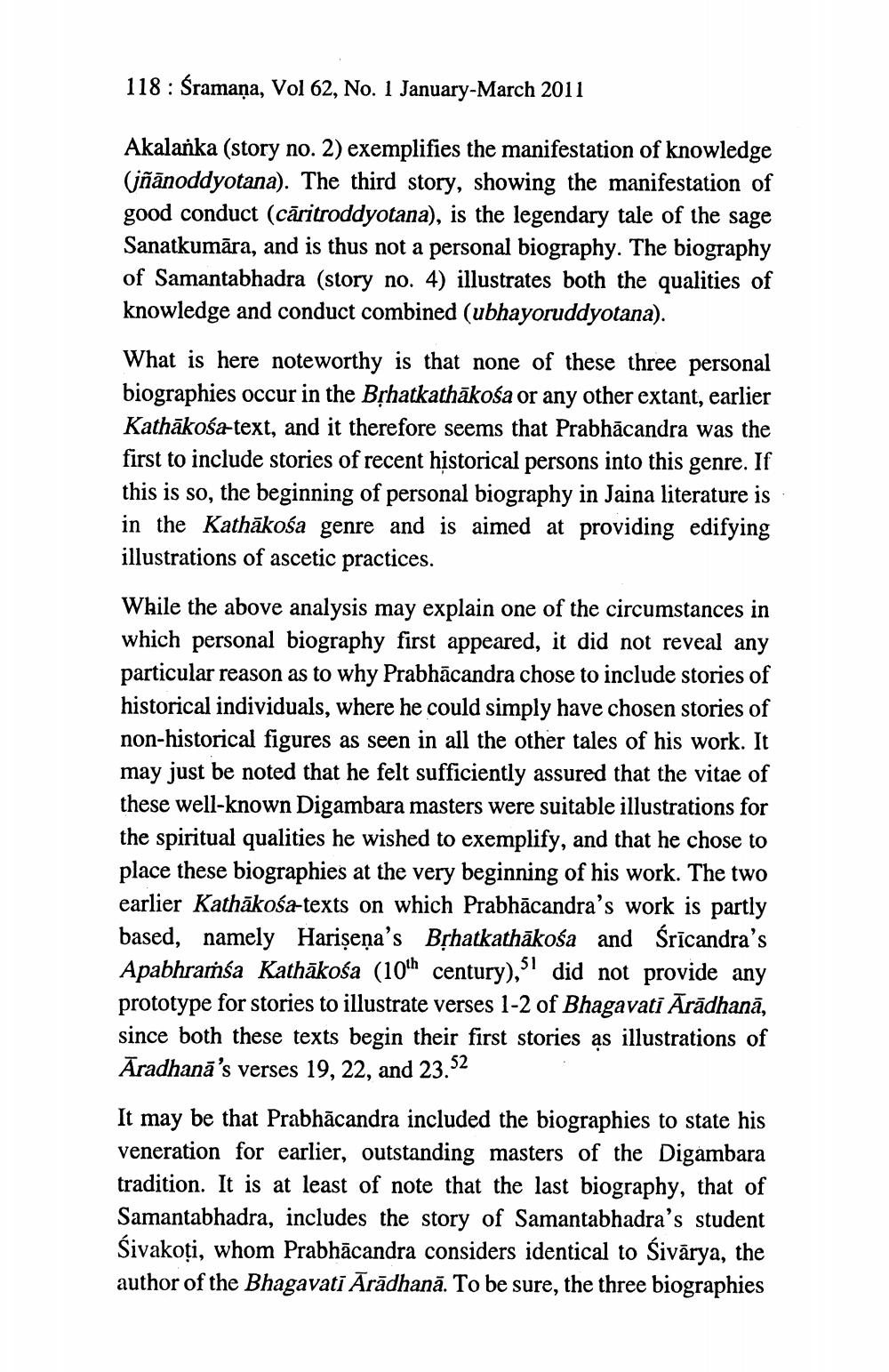________________
118 Śramana, Vol 62, No. 1 January-March 2011
Akalanka (story no. 2) exemplifies the manifestation of knowledge (jñānoddyotana). The third story, showing the manifestation of good conduct (caritroddyotana), is the legendary tale of the sage Sanatkumāra, and is thus not a personal biography. The biography of Samantabhadra (story no. 4) illustrates both the qualities of knowledge and conduct combined (ubhayoruddyotana).
What is here noteworthy is that none of these three personal biographies occur in the Bṛhatkathakośa or any other extant, earlier Kathakośa-text, and it therefore seems that Prabhācandra was the first to include stories of recent historical persons into this genre. If this is so, the beginning of personal biography in Jaina literature is in the Kathakośa genre and is aimed at providing edifying illustrations of ascetic practices.
While the above analysis may explain one of the circumstances in which personal biography first appeared, it did not reveal any particular reason as to why Prabhācandra chose to include stories of historical individuals, where he could simply have chosen stories of non-historical figures as seen in all the other tales of his work. It may just be noted that he felt sufficiently assured that the vitae of these well-known Digambara masters were suitable illustrations for the spiritual qualities he wished to exemplify, and that he chose to place these biographies at the very beginning of his work. The two earlier Kathakośa-texts on which Prabhācandra's work is partly based, namely Harisena's Bṛhatkathākośa and Śrīcandra's Apabhraṁśa Kathakośa (10th century),51 did not provide any prototype for stories to illustrate verses 1-2 of Bhagavatī Ārādhanā, since both these texts begin their first stories as illustrations of Aradhana's verses 19, 22, and 23. 52
It may be that Prabhācandra included the biographies to state his veneration for earlier, outstanding masters of the Digambara tradition. It is at least of note that the last biography, that of Samantabhadra, includes the story of Samantabhadra's student Śivakoti, whom Prabhācandra considers identical to Śivarya, the author of the Bhagavati Ārādhana. To be sure, the three biographies




